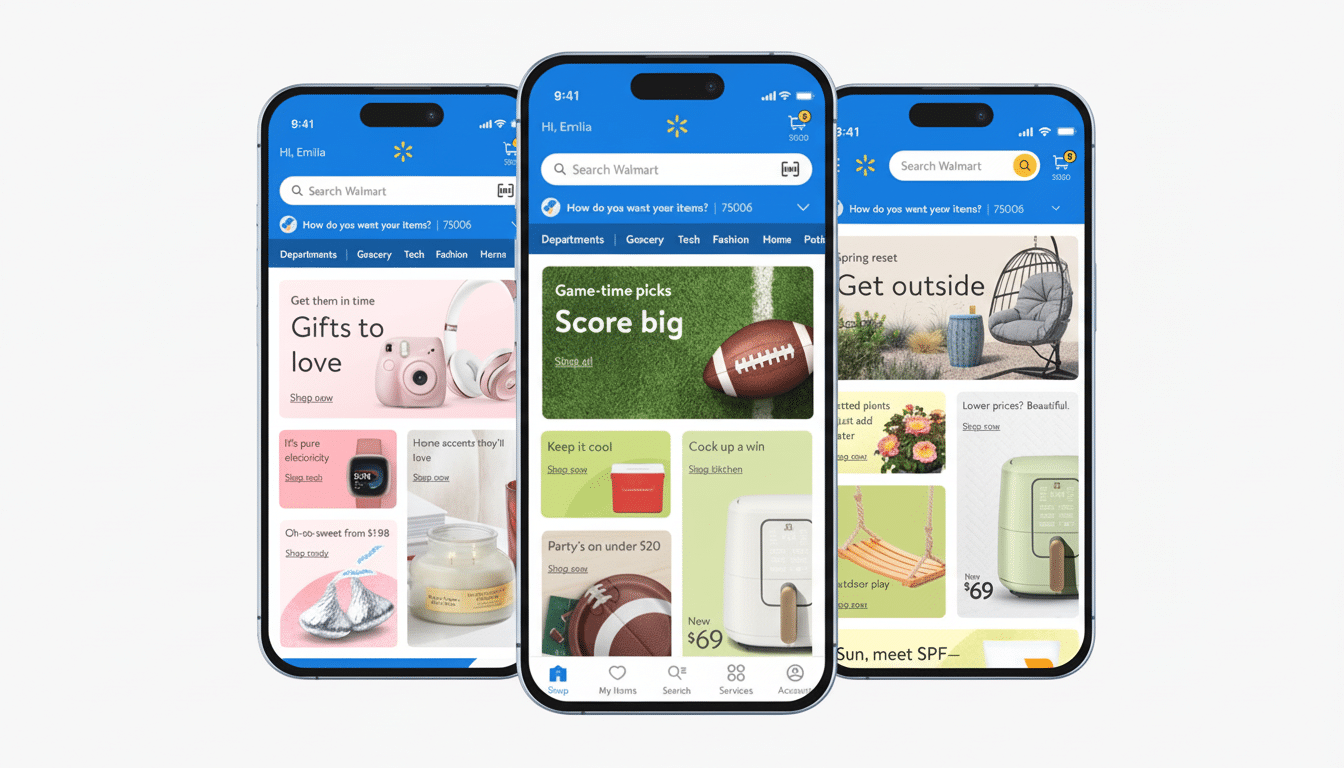Walmart Shopping Comes To ChatGPT. Conversational checkout moves from demo to daily life.
With OpenAI, Walmart is entirely enabling the consumer to navigate, stuff a cart, and make acquisitions from within ChatGPT, effectively transforming the chatbot into a front door for everyday shopping.
- From search boxes to agentic shopping in everyday e-commerce
- Why Walmart is leaning into AI-driven shopping and support
- What Walmart’s move means for competition in retail and e-commerce
- Practical considerations and early limitations for shoppers
- The road ahead for Walmart’s AI commerce and customer care

Shoppers sign in to ChatGPT and connect their Walmart account. A buy button is readily available whenever they discover anything they desire. The experience is designed for quick conversion: pick items, confirm details, and check out directly from the chat.
For example, at launch, the assortment centers on nonperishable categories: pantry staples, personal care, household necessities, school supplies, and general merchandise. Third‑party providers in the marketplace have made their listings available, expanding the selection beyond what Walmart’s first‑party catalog provides.
Meanwhile, Sam’s Club members will have the extra utility of an AI chat to help them plan meals, basket‑fill favorite items, and routinely buy, as well as to recommend new things to fit a budget, diet, or brand preference.
From search boxes to agentic shopping in everyday e-commerce
This is e‑commerce, transitioning from necessitative search to agentic shopping. Instead of scrolling through lengthy result pages, a shopper states a goal—“host a movie night for six at under $40” or “assemble a dorm starter kit”—and the agent fetches the list, works around the substitutions, and gets it to checkout.
OpenAI recently outlined plans for agentic shopping that span discovery, recommendations, and payments, with early collaborations involving sellers from platforms like Etsy and Shopify. Walmart’s integration brings that vision to a mass retail setting, with millions of SKUs and nationwide fulfillment.

Why Walmart is leaning into AI-driven shopping and support
Walmart has been building towards this. Its in‑house generative assistant, Sparky, already helps customers compare products and will soon expand to reorders, service booking, and multimodal inputs—across text, images, audio, and video. Internally, teams are currently using ChatGPT Enterprise and OpenAI Certifications to speed decision‑making and training. The retailer reports that AI is currently reducing cycle times in critical areas—accelerating fashion development by 16–18 weeks and slashing customer‑care resolution windows by 30–40% in some cases. The ChatGPT arrangement extends those efficiency gains to the sale, allowing Walmart to predict desires and offer tailored recommendations rather than responding to searches.
What Walmart’s move means for competition in retail and e-commerce
Conversational commerce has been a testing ground for years, but two prerequisites have finally aligned: a capable multimodal AI has emerged and retailers are now eager to embed it in live checkout adventures. For Walmart, that could mean meeting customers in places they already spend time: inside messaging and chat applications. That places conversion on routine baskets, where it is likely to boost, and opens the possibilities to new customers altogether.
The competitive background, however, is critical. Amazon has recently experimented with AI‑guided shopping journeys, and big marketplaces add chat‑based advice to product listings. According to analysts, guided conversational purchasing adventures can raise interaction and decrease abandonment compared to static searches, especially on the more difficult missions you might have, like the need to stock an empty kitchen or plan a week’s worth of meals.
Practical considerations and early limitations for shoppers
Practical considerations for shoppers: early use will likely favor replenishment and simple missions; the initial scope excludes fresh items, so produce and perishables will follow later. Availability, substitutions, and pick up or delivery slots/locations will be surfaced in chat, and the system is expected to respect a customer’s saved preferences and past purchases once accounts are linked. Trust and transparency is likely to be under the microscope: retailers and AI providers will need to be transparent about sponsored placements, transparent about why items are being recommended, and will offer easy controls to edit carts and opt out. Expect prominent cues around price, fees, and delivery windows so the convenience of one-tap checkout doesn’t obscure the details.
The road ahead for Walmart’s AI commerce and customer care
As capabilities mature, Walmart envisions chat that remembers goals, learns tastes, and can act across channels—reactivating lists, coordinating services, and handling customer care without handoffs. Bringing the Walmart marketplace into ChatGPT is a remarkable step along that path, turning an AI conversation into a store aisle open wherever you’re typing.

